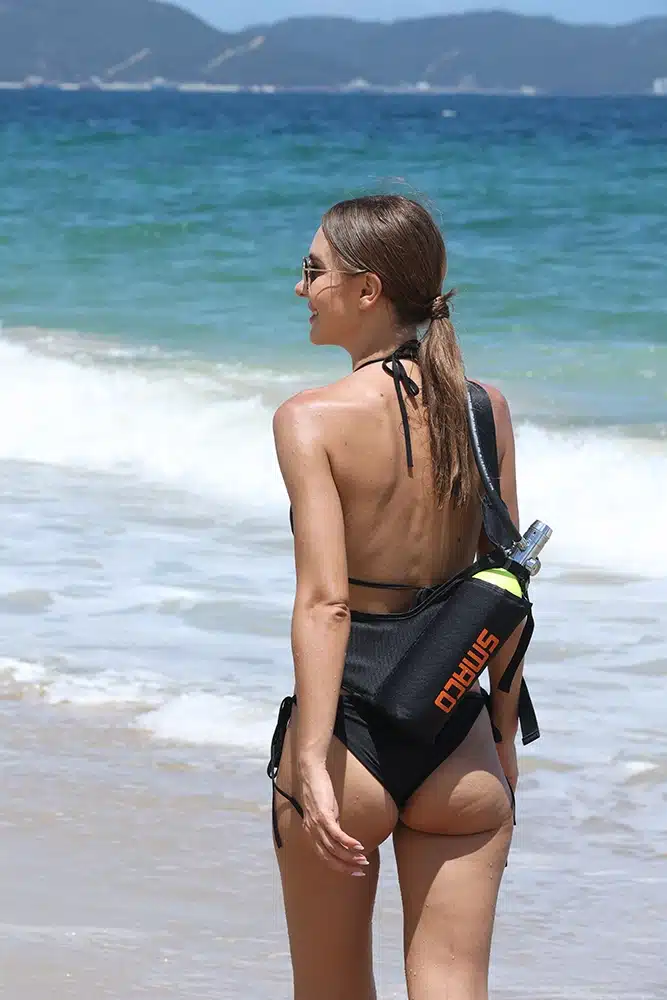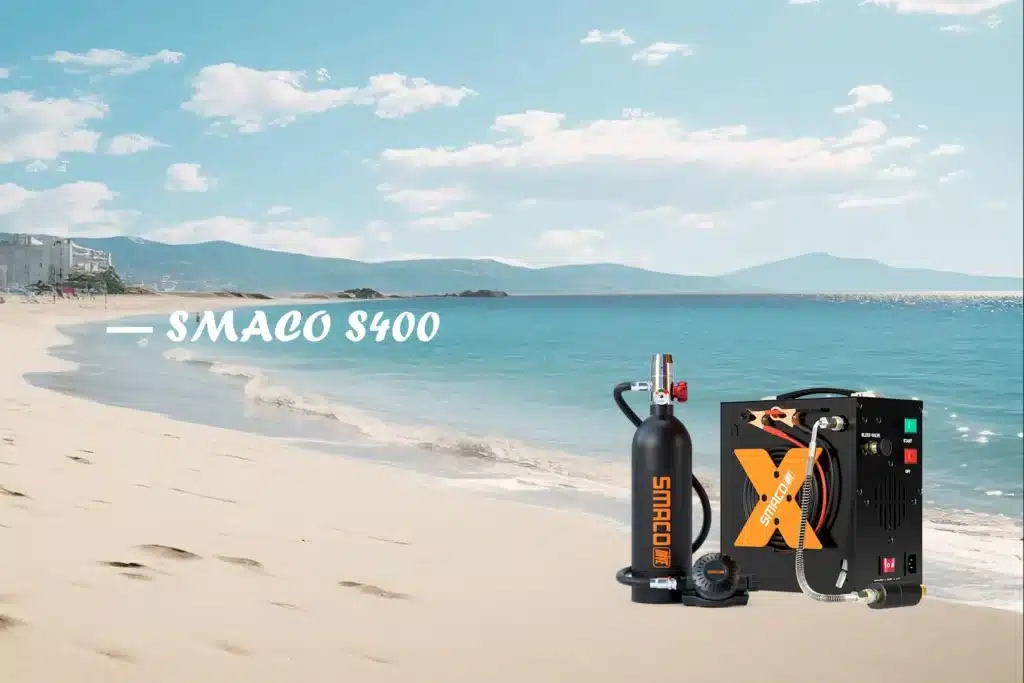Blog
SMACO S400 1L Mini Scuba Tank Review
Introduction — why a mini scuba tank?
Imagine slipping a compact breathing bottle into your travel bag and using it to extend shallow dives or capture the perfect underwater shot. The SMACO S400 1L mini scuba tank promises exactly that: lightweight, portable diving gear that makes brief underwater breathing as easy as snorkeling. But can one liter of air actually deliver useful bottom time? This review breaks down design, performance, filling methods, suitable users, and crucial safety rules so you can decide if the SMACO S400 belongs in your toolkit.
First impression: unboxing & design
The SMACO S400 arrives as a compact kit that typically includes:
- 1L aluminum alloy tank (≈2.3 kg empty)
- A second stage (mouthpiece/regulator)
- A pressure gauge
- A filling adapter (for pumps or compressors)
The build is intentionally travel-friendly: compact size, single-handed portability, and it fits in many suitcases or large backpacks. It’s marketed as portable diving gear for short, recreational use rather than a replacement for full scuba rigs.
What the SMACO S400 promises
Key marketing points:
- Extreme portability: tiny form factor for travel diving equipment.
- Easy to use: basic operation — open valve and breathe; marketed toward beginners.
- Multiple uses: snorkeling extension, brief freedive recovery, quick underwater photos.
- Lower entry cost: cheaper than full scuba gear or multiple dive courses.
Important: the device is positioned as supplemental and recreational — not a substitute for certified scuba systems.
Air duration is the key factor.
The “1L” in the S400 refers to the tank’s internal air capacity — when fully charged, it holds about one liter of compressed air. In shallow water (1–3 meters), where breathing is easier, this can translate to roughly 15–20 minutes of use. However, the actual duration varies greatly depending on your depth, breathing rate, and workload.
In short, the S400 is ideal for short dives, underwater photography, or brief explorations, but it’s not designed for long or deep underwater sessions.
Filling methods — the real logistical hurdle
Charging a 1L high-pressure scuba cylinder is often overlooked but critical.
Options:
- High-pressure manual hand pump: possible but extremely labor-intensive (hundreds to a thousand+ pumps).
- Dedicated refill cartridge/booster (portable fill): fastest and most convenient if available.
- Electric air compressor (high-pressure dive compressor): convenient and common in dive shops; fill time varies (often ~20–30 minutes with typical small compressors).
Practical tips:
- Confirm local dive shops can fill to the required pressure (many will).
- Check valve standards and compatibility (DIN vs INT).
- Never travel with a charged cylinder on a plane — check airline rules (empty bottles may sometimes be permitted with advance approval).
Who will buy the SMACO S400?
Good fit for:
- Snorkelers who occasionally want a few extra minutes underwater.
- Travel photographers who need short, stable breathing for shots.
- Freedivers use a surface-breathing aid between dives (with proper training).
- Travelers seeking a novel, lightweight underwater experience.
Not for:
- Anyone expecting to replace full scuba training/equipment.
- Deep divers or technical divers.
- Users who rely on equipment for emergency breathing or safety — this is not a certified life-saving device.
Safety essentials
Safety must come first with any underwater breathing system. Minimum checklist:
- Inspect valve and O-rings before each use.
- Verify pressure gauge and recommended fill pressure (never over-pressurize).
- Always dive with a buddy and maintain visual contact.
- Limit depth to ≤ 10 m and monitor remaining air closely.
- Reserve sufficient margin for ascent — plan to surface well before the bottle runs low.
Maintenance: Annual pressure testing and valve servicing are strongly recommended for high-pressure cylinders.

FAQ
- Q: Can I bring it on a plane?
A: Charged cylinders are prohibited. Empty, with protective caps, may be allowed, but check with your airline in advance. - Q: Is it an emergency lifesaver?
A: No. It’s a recreational aid, not a certified rescue device. - Q: How long does a fill last?
A: Depends on depth and breathing; shallow: 15~20 min surface equivalent. - Q: How to refill?
A: Dive shop compressor, portable booster cartridge, or manual pump (last resort).
Real-world scenarios
- Underwater photography: gives you a short, stable window for shots — excellent for a few well-planned frames.
- Snorkel-to-dive transitions: add a couple of controlled shallow descents during a surface snorkel trip.
- Travel convenience: small size fits in luggage, but plan filling logistics.
Verdict — should you buy it?
If you want short, controlled underwater breaths for photos or a quick exploration, and you accept the limits (runtime, refill logistics, depth ceiling), the SMACO S400 1L is a fun, worthwhile add-on to your travel diving equipment. If you expect full scuba experiences, long bottom time, or deep dives, invest in proper certified gear and training instead.
Disclaimer: This review aims to be practical and safety-conscious. Always follow manufacturer instructions, seek professional training when in doubt, and never use supplemental equipment beyond its intended limits. Using any scuba or breathing device carries risk — dive safe and dive smart.
